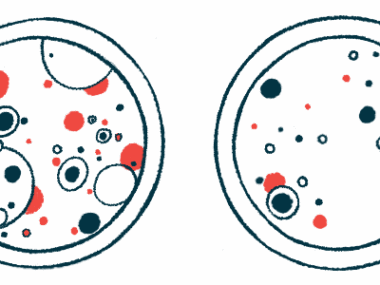Tofacitinib treatment eases man’s EB acquisita symptoms
Therapy is sold as Xeljanz, Xeljanz XR to treat arthritis, IBD, ankylosing spondylitis
Written by |

Tofacitinib, a therapy approved for certain inflammatory diseases effectively controlled symptoms of epidermolysis bullosa acquisita (EBA) in a man with the disease.
The case was described as a letter to the editor titled “Treatment of Recurrent Epidermolysis Bullosa Acquisita With Tofacitinib” in JAMA Dermatology.
EBA is a form of epidermolysis bullosa caused by the immune system attacking healthy tissue. In EBA, the immune system attacks a structural protein called type VII collagen, leading to symptoms such as blistering.
Scientists in China reported the case of a 58-year-old man who went to the hospital after developing blisters on his trunk and limbs. Diagnostic tests identified antibodies against type VII collagen, confirming a diagnosis of EBA.
The man was initially given prednisolone and methotrexate, both anti-inflammatory therapies that work by suppressing the immune system. These were continued for a year, but were stopped when the man developed an pneumocystis pneumonia infection and also due to osteoporosis (weak and brittle bones).
After recovering, the man’s rash reappeared, particularly on his upper thighs and buttocks. He was given a low dose of the corticosteroid prednisolone combined with tofacitinib at a dose of 5 mg twice daily.
Tofacitinib is sold under the brand names Xeljanz and Xeljanz XR to treat certain forms of arthritis, inflammatory bowel disease, and ankylosing spondylitis. It works as a JAK inhibitor, blocking molecular signaling pathways that drive inflammatory activity.
The patient responded well to tofacitinib. “After [four] months of treatment, the blisters and erosions almost disappeared,” the researchers said, noting that the resolution of symptoms was accompanied by a decrease in counts of neutrophils, a type of immune cell known to play a role in EBA.
“In this patient with tofacitinib-treated refractory EBA, we observed a decrease in circulating neutrophil counts,” the researchers wrote, adding the association between neutrophil counts and clinical response in EBA is unclear and requires further study.
Over the next 20 months, the dose of the immune-suppressing medicines was gradually tapered without the man’s EBA symptoms returning.
“Although further study is warranted, these findings suggest the potential of JAK inhibitor therapies in treating EBA,” the researchers said.






